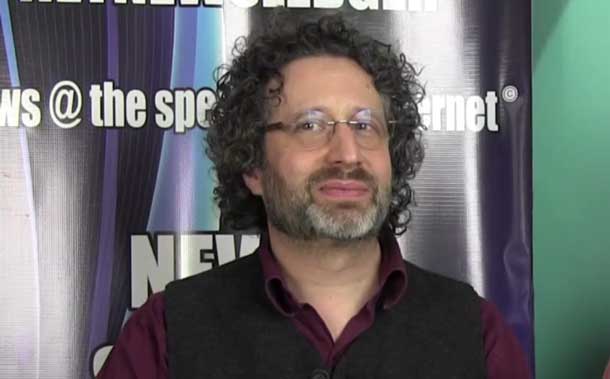Suicide is a Response to Community Pain
COLUMBUS, Ohio – The adolescent and young-adult suicide rate in the United States was almost twice as high in rural settings than in urban areas between 1996 and 2010, and new research suggests that the gap appears to be widening.
Of the nearly 67,000 suicides analyzed, the rate of suicide for both males and females living in rural areas was about double the rate in cities.
The research, published in JAMA Pediatrics, also showed that gun use has decreased and that hanging has become a more common method of youth suicide for both males and females. Suicide rates by firearm and hanging were both disproportionately higher in rural areas than in urban regions for both sexes.
The findings suggest there is an urgent need to improve access to and availability of mental health care in rural areas, researchers say. The authors suggest that incorporating mental health care into primary care settings, providing care via telemedicine and creating school-based interventions might help reduce youth suicides in rural areas.
“These kinds of surveillance studies can really help us identify areas to target our prevention efforts, and it’s clear we need to target rural areas for primary prevention of suicide,” said Cynthia Fontanella, clinical assistant professor of psychiatry and behavioral health at The Ohio State University Wexner Medical Center and lead author of the study.
Fontanella cited access barriers to health care, geographic isolation and disproportionate stigma associated with mental illness as potential reasons for the observed disparities. “Rural America is beautiful, and many individuals live in close-knit communities. But in terms of access to services and perhaps some other factors, the cards may be stacked against them.”
Fontanella and colleagues analyzed mortality data from the National Center for Health Statistics National Vital Statistics System. Between 1996 and 2010, 66,595 youths between age 10 and 24 died by suicide in the United States.
Among males, the rural versus urban suicide rate was 19.93 and 10.31 per 100,000, respectively, and for females, 4.40 and 2.39 per 100,000, respectively. When the researchers controlled for a number of other potential contributing factors, the rural and urban suicide rate disparity increased over time for males. The analysis also showed the suicide rate for young males is four times higher than for young females.
More than half of this population – 51.1 percent – committed suicide with a firearm, and 33.9 percent died by hanging. Poisoning accounted for 7.9 percent of suicides and other methods, such as jumping and transportation-related suicides, composed 7.1 percent of the deaths.
Clinicians have identified many risk factors for suicide over the years, but two in particular stand out, said John Campo, chair of psychiatry and behavioral health at Wexner Medical Center and senior author of the paper. About 90 percent of people who commit suicide suffer from a major psychiatric problem such as depression or bipolar disorder. Substance abuse, which can increase impulsivity and interfere with mood, is also frequently linked to suicides.
No studies have been done to try to pinpoint specific causes of this disparity in suicides based on where young people live. But these authors considered a number of potential contributing factors in the paper, all supported by previous research.
Between the dispersed nature of rural populations and a severe shortage of mental health practitioners, access to care is a major problem.
“If a rural child is depressed, it’s much harder to get state-of-the-art care. And it’s especially difficult to receive psychotherapy in a rural area,” Campo said.
Of the 1,669 federally designated shortage areas for mental health services in the United States, 85 percent are in rural regions. And more than half of the counties in this country – all rural – do not have a single psychiatrist, psychologist or social worker serving the region.
This lack of access can compound the severity of illness, Fontanella said. People living in rural areas have to travel longer distances to see health care practitioners and wait longer for appointments, so by the time they receive care they may have developed more serious symptoms. And the culture of self-reliance in rural areas, as compared to urban living, may intensify the stigma associated with mental illness.
“There is a lot of pride around taking care of your own problems and turning to neighbors rather than professionals for help,” Fontanella said.
Because families living in rural areas tend to see a primary care practitioner for most of their health care, integrating mental health care into rural primary care settings – either with on-site practitioners or via remote video access – has promise, Campo said.
“It’s going to be hard to generate the numbers of mental-health providers to get where we need to go. So we need to address things qualitatively to improve the entire system of care, which will improve access,” he said.
This work was supported by the National Center for Advancing Translational Sciences, which funds the Center for Clinical and Translational Science at Ohio State.
Is there a Cure?
There is a cure for youth suicide. Dr. Darien Thira was in Thunder Bay recently doing a workshop for Dilico. “Out of the box and into the circle”, states Darien Thira.
Thira was hosting a workshop in Thunder Bay at Dilico. The goal was helping to spread the word that there is a cure for the epidemic of suicide on Canada’s First Nations communities.
Thira said that the issue of youth suicide is partly a response to colonization and the youth feeling that they don’t have a voice, or are respected in the community.
The solution can be found in engaging youth, making youth a part of the community. In many cases, the youth leave the community. First in the case of many families the reality is the youth end up in care. “There are more children in care today than ever before,” Thira states.
The youth also leave their communities for high school. Taking youth out of the community at the start of their teen years is a serious factor.
It is magnified by reducing the engagement of the youth in the community. Youth who leave the community for high school end up disconnected from family and community.








